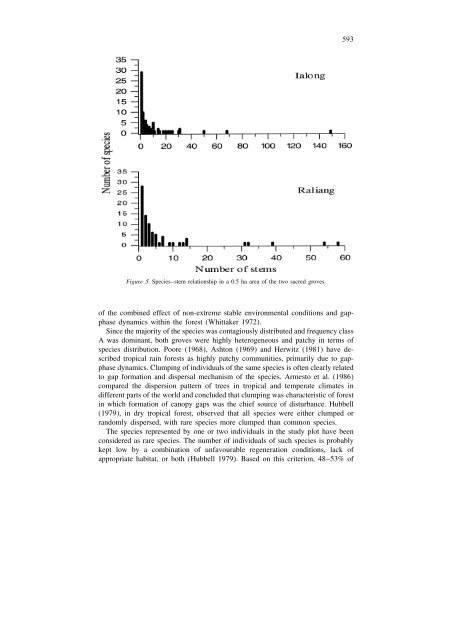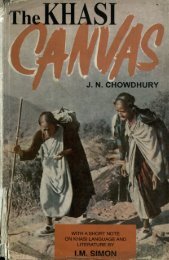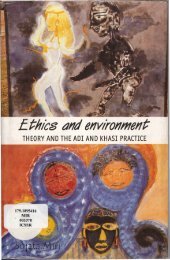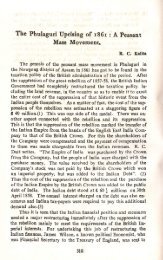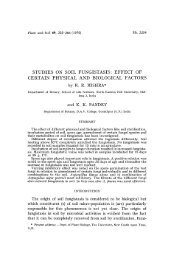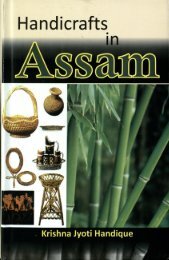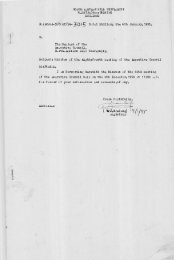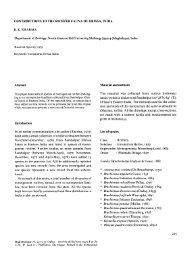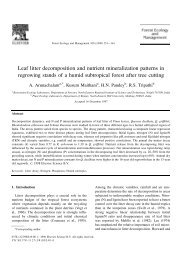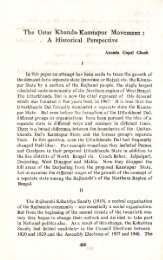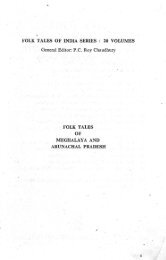Tree diversity in sacred groves of the Jaintia - DSpace@NEHU ...
Tree diversity in sacred groves of the Jaintia - DSpace@NEHU ...
Tree diversity in sacred groves of the Jaintia - DSpace@NEHU ...
You also want an ePaper? Increase the reach of your titles
YUMPU automatically turns print PDFs into web optimized ePapers that Google loves.
Figure 5. Species–stem relationship <strong>in</strong> a 0.5 ha area <strong>of</strong> <strong>the</strong> two <strong>sacred</strong> <strong>groves</strong>.<br />
593<br />
<strong>of</strong> <strong>the</strong> comb<strong>in</strong>ed effect <strong>of</strong> non-extreme stable environmental conditions and gapphase<br />
dynamics with<strong>in</strong> <strong>the</strong> forest (Whittaker 1972).<br />
S<strong>in</strong>ce <strong>the</strong> majority <strong>of</strong> <strong>the</strong> species was contagiously distributed and frequency class<br />
A was dom<strong>in</strong>ant, both <strong>groves</strong> were highly heterogeneous and patchy <strong>in</strong> terms <strong>of</strong><br />
species distribution. Poore (1968), Ashton (1969) and Herwitz (1981) have described<br />
tropical ra<strong>in</strong> forests as highly patchy communities, primarily due to gapphase<br />
dynamics. Clump<strong>in</strong>g <strong>of</strong> <strong>in</strong>dividuals <strong>of</strong> <strong>the</strong> same species is <strong>of</strong>ten clearly related<br />
to gap formation and dispersal mechanism <strong>of</strong> <strong>the</strong> species. Armesto et al. (1986)<br />
compared <strong>the</strong> dispersion pattern <strong>of</strong> trees <strong>in</strong> tropical and temperate climates <strong>in</strong><br />
different parts <strong>of</strong> <strong>the</strong> world and concluded that clump<strong>in</strong>g was characteristic <strong>of</strong> forest<br />
<strong>in</strong> which formation <strong>of</strong> canopy gaps was <strong>the</strong> chief source <strong>of</strong> disturbance. Hubbell<br />
(1979), <strong>in</strong> dry tropical forest, observed that all species were ei<strong>the</strong>r clumped or<br />
randomly dispersed, with rare species more clumped than common species.<br />
The species represented by one or two <strong>in</strong>dividuals <strong>in</strong> <strong>the</strong> study plot have been<br />
considered as rare species. The number <strong>of</strong> <strong>in</strong>dividuals <strong>of</strong> such species is probably<br />
kept low by a comb<strong>in</strong>ation <strong>of</strong> unfavourable regeneration conditions, lack <strong>of</strong><br />
appropriate habitat, or both (Hubbell 1979). Based on this criterion, 48–53% <strong>of</strong>


